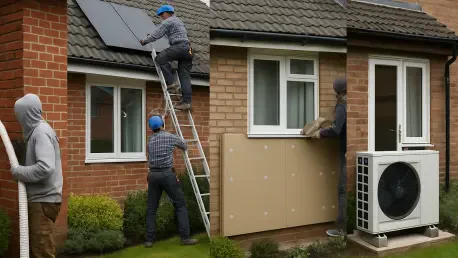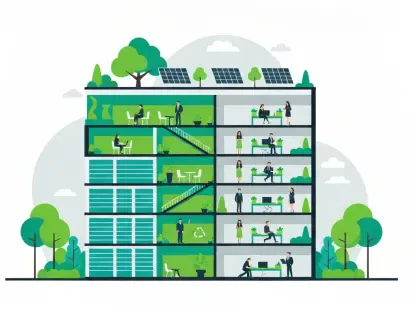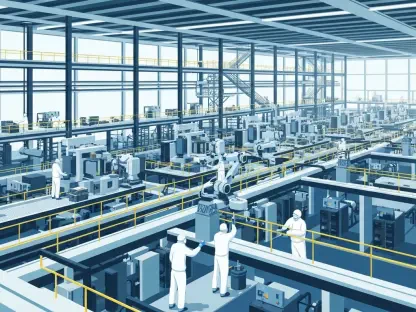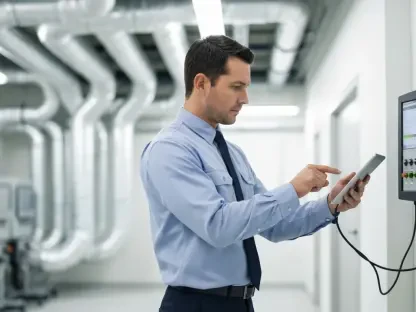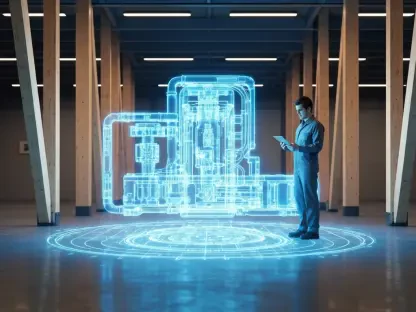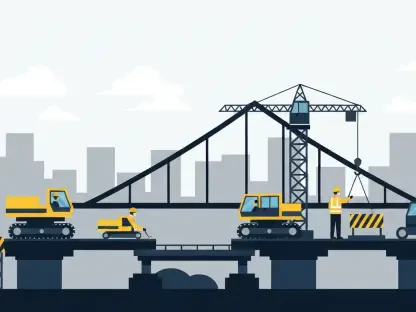I’m thrilled to sit down with Luca Calaraili, a seasoned expert in construction with a deep background in design and architecture. Luca’s passion for integrating innovative technology and tools into the industry makes him a leading voice in the push for energy efficiency and Net Zero goals, especially in retrofit projects. Today, we’ll explore how occupant education, post-occupancy evaluations, and industry practices are shaping the journey to sustainable homes, as well as the challenges and opportunities that lie ahead in bridging the gap between design ambitions and real-world performance.
Can you tell us about the Warm Homes Plan and how the £13.2 billion investment is set to transform energy efficiency in existing homes?
The Warm Homes Plan is a major initiative in the UK aimed at upgrading the energy efficiency of existing housing stock, with a hefty £13.2 billion committed in the 2025 Spending Review. The goal is to reduce energy consumption and carbon emissions by retrofitting homes with better insulation, modern heating systems, and other efficiency measures. This investment is a cornerstone of the broader Net Zero strategy, as it tackles one of the biggest sources of emissions—our homes. By focusing on retrofits, the plan not only aims to cut energy bills for households but also to make a significant dent in national carbon footprints, aligning with long-term sustainability targets.
Why do you believe occupant education is so vital to achieving Net Zero in retrofit projects?
Occupant education is absolutely critical because even the best retrofit measures can fall flat if the people living in these homes don’t know how to use them properly. Without guidance, residents might misuse low-carbon systems like heat pumps or misunderstand environmental controls, leading to higher energy use and discomfort. Educating occupants ensures they can maximize the benefits of retrofits—lower bills, better indoor comfort, and reduced emissions. It’s about empowering them to be active participants in the Net Zero journey, rather than leaving them frustrated with systems they don’t understand.
Given that 97% of construction professionals recognize occupant behavior as key to operational efficiency, what does this awareness signify about the industry’s perspective?
This near-universal agreement shows that the industry fundamentally understands the link between how buildings are used and how they perform. It’s a positive sign that professionals see occupants as central to achieving energy efficiency goals, rather than just focusing on design or technology alone. However, awareness isn’t enough—translating that into action is where the gap lies. It signals a growing recognition that buildings aren’t just structures; they’re ecosystems where human behavior plays a massive role in outcomes.
Despite this awareness, why do you think 76% of professionals don’t prioritize post-occupancy evaluations after handover?
I think it often comes down to a mix of time, cost, and mindset. Post-occupancy evaluations (POEs) require additional resources and effort after a project is technically “done,” and many professionals or companies might see the handover as the finish line. There’s also a lack of standardized processes or mandates for POEs in many cases, so they’re treated as optional rather than essential. Plus, some may fear that follow-ups could reveal flaws or dissatisfaction, which can be uncomfortable to address. It’s a short-term view that overlooks the long-term value of ensuring a building performs as intended.
Can you walk us through what a post-occupancy evaluation entails and why it’s so important?
A post-occupancy evaluation is essentially a check-in after a building is occupied to see how it’s performing in real life compared to its design goals. It involves gathering data on energy use, indoor comfort, and occupant feedback through surveys, interviews, and sometimes on-site measurements. The importance lies in identifying discrepancies—like if a heating system isn’t delivering the expected savings or if residents are struggling with controls. POEs help close the loop by pinpointing issues and guiding adjustments, whether that’s tweaking systems or providing better user training. Without them, you’re just guessing if the retrofit truly works.
Studies show a performance gap of up to 300% between predicted and actual building output. How does this impact homeowners and the environment?
This gap is staggering and has real consequences. For homeowners, it often means higher energy bills and homes that aren’t as comfortable as promised—think drafty rooms or overheating despite upgrades. Environmentally, it’s even worse; if a building uses three times more energy than expected, that’s a massive increase in carbon emissions, directly undermining Net Zero goals. It’s a double hit—financial strain on residents and a setback for sustainability. Occupant behavior plays a big role here, as misuse or lack of understanding can amplify inefficiencies, but design and installation flaws also contribute.
With over half of consumers unaware of what ‘retrofit’ even means, how does this lack of awareness hinder project success?
When 55% of people don’t know what retrofit means, you’ve got a fundamental barrier to engagement. Homeowners who don’t understand the concept or its benefits are less likely to invest in upgrades or use them effectively. This lack of awareness can lead to skepticism or indifference, slowing down the adoption of retrofit programs. It also means missed opportunities to reduce energy use and emissions at scale. If the public doesn’t see the link between retrofitting their homes and broader carbon goals, the industry struggles to build momentum for these critical projects.
What strategies do you think could help bridge this knowledge gap and better educate homeowners about retrofits?
Education needs to start with clear, accessible communication. The industry can partner with local governments or community organizations to run workshops or campaigns that explain retrofitting in simple terms—focusing on tangible benefits like lower bills and cozier homes. Digital tools, like apps or online guides, can also help demystify low-carbon systems. Plus, during the handover process, builders should prioritize one-on-one sessions to walk residents through their upgraded homes. Making the connection to carbon reduction explicit—through visuals or real data—can also inspire action and show homeowners they’re part of a bigger mission.
Tom Garrigan from BSRIA has said that handing over a retrofitted home shouldn’t be the end of the story. What kind of ongoing support do you think homeowners need after handover?
Homeowners need continuous support to feel confident with their retrofitted spaces. This could include follow-up visits from contractors to troubleshoot issues or answer questions about systems like heat pumps or smart thermostats. Providing user-friendly manuals or even video tutorials can be a game-changer for ongoing reference. Additionally, setting up helplines or community forums where residents can seek advice helps maintain engagement. The key is ensuring they understand how to operate and maintain these systems for maximum efficiency—support shouldn’t just stop at the front door.
Looking ahead, what is your forecast for the role of occupant education in achieving Net Zero through retrofit projects?
I believe occupant education will become a make-or-break factor in the push for Net Zero. As retrofit projects scale up and new technologies become standard, the industry will have no choice but to prioritize user engagement. We’ll likely see more structured programs for education and support integrated into funding schemes and regulations. If done right, this focus could significantly narrow the performance gap and ensure that retrofits deliver on their promise—both for individual households and for our planet. But it’ll require a cultural shift in how we view handover and occupant involvement, making them as critical as the upgrades themselves.
